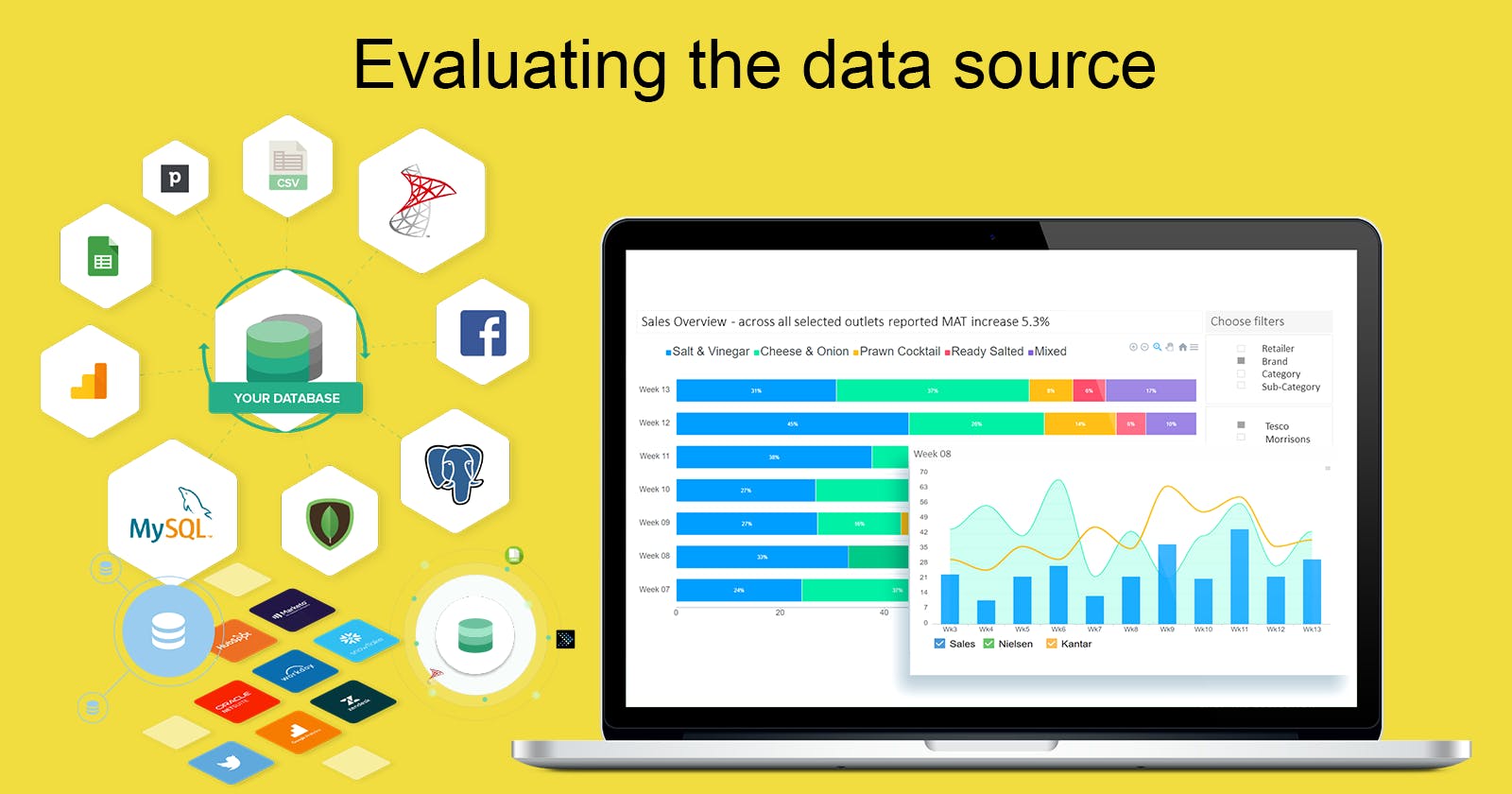Data is the lifeblood of any database, and the quality, reliability, and completeness of the data have a significant impact on the effectiveness of the database. There are many different types of data sources, including structured and unstructured data, internal and external data, and batch and real-time data.
Identifying and understanding relevant data sources is essential for any student looking to design, implement, or manage a database successfully.
When evaluating a data source, the following factors should be considered:
Quality
The quality of data can be evaluated based on the accuracy and completeness of the data. It is also essential to check the data's source, the methodology used to collect the data, and whether the data has been reviewed or vetted by experts in the field. Consider if the data is biased!
Detail
The data's detail can vary based on the data source and the data type. It is essential to evaluate whether the data provides sufficient information to answer the research questions. In some cases, data may require additional preprocessing or cleaning to be useful.
Documentation
The documentation should provide a clear description of the data, including its source, methodology, and format. It should also describe any transformations or processing that has been applied to the data.
Interrelation
It is essential to evaluate whether the data can be connected to other data sets to provide additional insights or support data analysis. If the data can be connected to other data sets, it is also essential to evaluate the ease of integration.
Use
The data can be used for a variety of purposes, including research, analysis, and decision-making. When evaluating a data source, it is essential to consider the research questions that the data can answer and any limitations or gaps in the data.
Discoverability
Finding open data can sometimes be challenging, depending on the domain. When searching for open data, it is essential to check government or academic sources, data repositories, and data marketplaces. Evaluating multiple data sources can also help identify the most reliable and relevant data sets for a specific research question.
Data munging
Data munging, also known as data wrangling or data cleaning, is a critical step in the data analysis process. It involves cleaning and transforming raw data into a format that is suitable for analysis. Data munging typically involves a series of steps, such as data cleaning, integration, transformation, reduction, and enrichment.
Data cleaning is the process of identifying and correcting errors in the data, such as missing values, inconsistent formatting, or outliers. Integration involves combining data from multiple sources to create a unified data set. Transformation involves converting data from one format to another, such as changing the data type or scaling data.
Reduction involves selecting a subset of data for analysis, such as filtering data based on specific criteria.
Enrichment involves adding additional data to the data set, such as geospatial data or demographic data.
Data munging can be a time-consuming and iterative process, but it is essential for ensuring that the insights derived from the data are reliable and meaningful. Poorly cleaned or formatted data can lead to incorrect or misleading analysis results. Therefore, data munging is a crucial skill for students learning about data and databases. By mastering data munging techniques, students can effectively clean and prepare data for analysis, which is essential for data-driven decision-making in various fields such as business, science, and healthcare.
Data munging typically involves a series of steps, including:
Data cleaning: This involves identifying and correcting errors in the data, such as missing values, inconsistent formatting, or outliers.
Data integration: This involves combining data from multiple sources to create a unified data set.
Data transformation: This involves converting data from one format to another, such as changing the data type or scaling data. (scaling refers to the process of transforming numerical data to a standard scale or range. The goal of scaling is to normalize the data and ensure that all variables are on a similar scale).
Data reduction: This involves selecting a subset of data for analysis, such as filtering data based on specific criteria.
Data enrichment: This involves adding additional data to the data set, such as geospatial data or demographic data.
